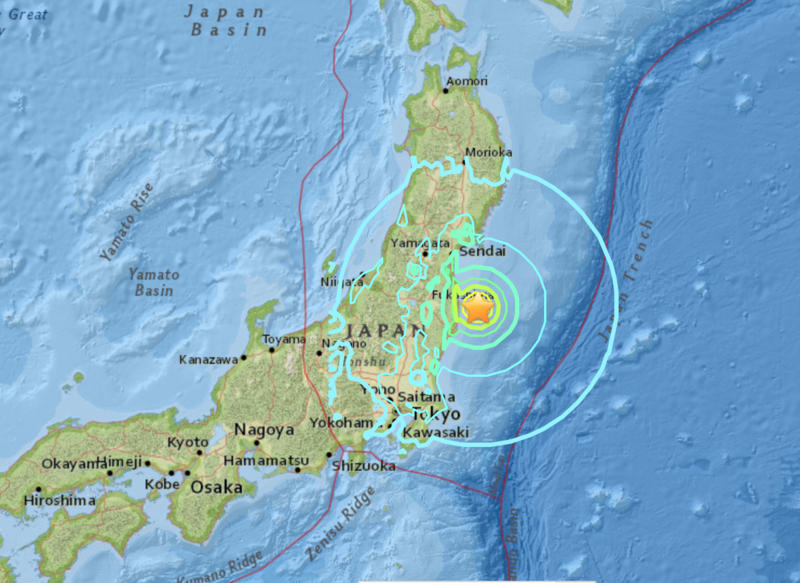According to the National Meteorological Agency, the strong earthquake that hit Japan on Saturday was an aftershock of the crippling 9.0 magnitude quake that struck the same area almost 10 years ago.

Related Article: [BREAKING] Japan Hit by 7.1 Magnitude Earthquake in World's Worst Nuclear Disaster Fukushima
Remembering the 2011 quake
The magnitude 7.1 earthquake reached the east coast of the country at 11:07 p.m. on February 13, Saturday. According to state broadcaster NHK, at least 48 injuries have been recorded in Fukushima and Miyagi prefectures, but no serious casualties have occurred.

This was Japan's most powerful earthquake ever reported and the world's fourth most powerful earthquake since the beginning of modern record-keeping in 1900. The quake produced strong tsunami waves in Miyako in Tōhoku's Iwate Prefecture that could have hit heights of up to 40.5 meters (133 ft).
According to the United States Geological Survey, the epicenter struck about 46 miles (74 kilometers) north-east of Namie, a coastal town 60 miles from Fukushima. The earthquake measured a depth of around 36 miles. There was no tsunami alert given.
Nuclear disaster
The earthquake that triggered the country's worst nuclear accident on record took place in the same area as the March 11, 2011 earthquake. Three reactors at the Fukushima Daiichi nuclear plant melted down, leaking radioactive materials into the air.
Casualty
More than 20,000 people either died or went missing, while hundreds of thousands more lost their homes in the 2011 quake and tsunami. More than 100,000 individuals have been evacuated from the city.
Authorities have been sweeping up the region for the past ten years-a major endeavor that analysts estimate will take a couple more decades to finish.
Recovery
Despite these ongoing efforts, the torch relay is scheduled to launch its journey in Fukushima on March 25, 2021 - a sign of regeneration and restoration in the region - as Japan hosts the Olympics this year.
The Olympic Committee said on its website, "As 2021 will mark the 10th anniversary of the 2011 Great East Japan Earthquake, the rescheduled Tokyo 2020 Olympic Torch Relay will aim to showcase the recovery of the areas worst affected by the disaster,"
Japanese Prime Minister Yoshihide Suga told the public early that "no abnormalities" were registered at any of the region's nuclear plants after the Saturday earthquake.
2021 quake
Speaking to the press, Suga said the damage is still being analyzed and asked people to remain indoors and be prepared for aftershocks in the affected area.
Landslides and uprooted parts of the main expressway were exacerbated by the earthquake, impacting both prefectures. As NHK reported, embankments along the road collapsed, covering the road and burying guardrails in the mud.
In the Kanto and Tohoku areas, including the Greater Tokyo, about 850,000 households lost power after the quake, NHK said. Power is now being restored cautiously.
Can aftershocks last up to years?
Aftershocks are earthquakes that accompany an earthquake sequence's strongest shock. They are relatively smaller than the mainshock and isolate from the mainshock between 1-2 rupture distances. Aftershocks can last over a period of weeks, months, or years. The greater the mainshock, the stronger, longer, and more frequent the aftershocks may occur.
For more news about natural calamities, don't forget to follow Nature World News!
© 2026 NatureWorldNews.com All rights reserved. Do not reproduce without permission.





